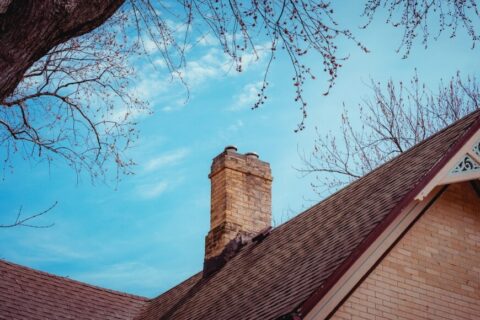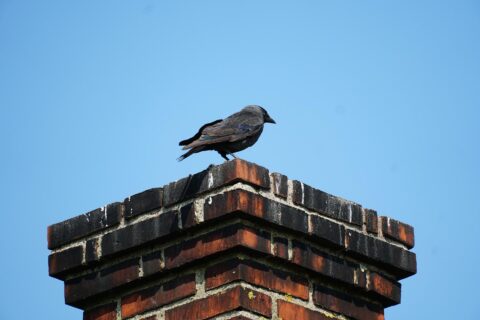All About Leaky Chimneys
Water in the firebox. Crumbling brick. A moldy smell that just won’t go away. All of these fireplace problems can be caused by a leaky chimney. While some chimney leaks may seem like more of a minor inconvenience, even a small amount of water can cause serious damage to your chimney system.
Causes of chimney leaks.
There is no one cause of a leaky chimney. Because of this, a chimney inspection is often needed to identify the cause of a leaky chimney. While a number of chimney components can be the source of a chimney leak, the following are four of the most common:
- Chimney crown. The chimney crown is a slab of masonry or stone that covers the top of the chimney. Because of its location, chimney crowns are often exposed to the worst brunt of the elements; chimney crowns can also be damaged from poor construction or bad materials. When cracks or other damage happens to the chimney crown, water can seep through the holes and into the chimney system.
- Chimney cap. The chimney cap, which sits on top of the chimney crown, covers and protects the top of the flue while still allowing smoke and gas to safely vent. If the chimney cap is damaged or missing, water, as well as debris and animals, can freely enter the flue. This affects not only the flue liner, but the delicate masonry of the firebox as well.
- Masonry. Bricks and mortar are ideally suited for chimney construction because they are naturally porous; this allows smoke and gas to pass through the masonry safely instead of becoming trapped inside your home. Unfortunately, this porous nature can also allow water into the masonry. Water damage, such as that caused by the freeze-thaw cycle, can soak the bricks of the chimney as well. This causes damage and leaks in the fireplace system.
- Flashing. Flashing is made when strips of metal are layered with other waterproofing products to seal the joint between the chimney and the roof-line. Over time, flashing can lose its waterproof seal due to exposure to the elements, age, poor construction, or roof repairs. Leaky flashing can cause water damage that mimics that of a leaky roof, allowing water to soak through ceilings and walls near the chimney.
Preventing a leaky chimney.
The best way to protect your chimney against leaks is with regular maintenance. Chimney inspections along with yearly chimney sweepings can help identify areas of damage or deterioration, as well as help your chimney sweep find and repair the source of any ongoing leaks.
In addition to annual maintenance, waterproofing your chimney with a masonry sealant can help protect it against water damage. Waterproofing your chimney with these specially designed sealants allows the brick to retain its semi-porous nature. In addition to still keeping water from being absorbed. Waterproofing can also be useful in protecting a chimney that has already begun to deteriorate due to water damage.
If your chimney is leaking, don’t delay! If you are in the metro Baltimore area, contact Chimney TEK today for more information on how we can repair your leaky chimney.



